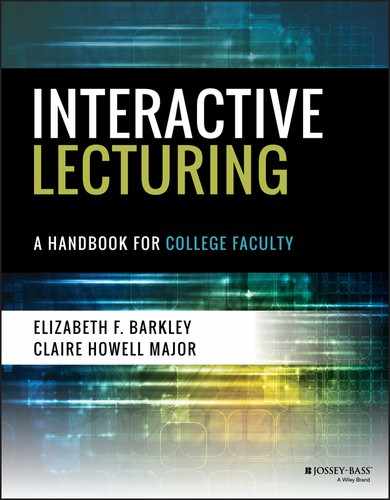CHAPTER 17
Listening for Information
Some educators dismiss listening to a lecture as a passive learning activity, and they have some basis for this perception. Many students do not know how to listen to a lecture actively. They let their minds wander. They may get caught up in what the professor looks like or is wearing. If they are listening to what the professor is saying, they may be focusing on facts but not know which facts are the most essential, and consequently they get dragged down by the details.
But students can learn to be active listeners. Students can strive to understand foundational concepts and the underlying organization of the information. They can try to distinguish between main and supporting evidence. They can anticipate what is coming next. They can summarize to themselves what they are hearing and formulate questions about that which they do not understand. They can listen for what they do and do not agree with and try to not turn off when they hear the latter.
When you help students to develop active listening skills, you not only enable them to learn more from your lecture but also provide them with important success skills that will benefit them throughout their education, future employment, and life in general. In this chapter, we describe four techniques designed to help students listen actively for information. We summarize these Techniques in Exhibit 17.1.
